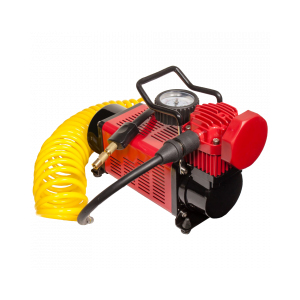cutless bearings
Understanding Cutlass Bearings The Unsung Heroes of Marine Propulsion
In the realm of marine propulsion systems, cutlass bearings often go unnoticed, overshadowed by flashier components such as engines and propellers. However, these critical components play an indispensable role in ensuring smooth and efficient operation of boats and ships. This article delves into the importance, design, maintenance, and selection of cutlass bearings, showcasing why they deserve a spotlight in marine engineering.
What Are Cutlass Bearings?
Cutlass bearings are specialized bearings designed to support the shaft of a boat or ship. Positioned in the hull, they are typically made of a durable, self-lubricating material, like rubber, plastic, or bronze. Unlike standard bearings used in other machinery, cutlass bearings are designed to operate in a marine environment, where water, saline, and other corrosive elements can wreak havoc on less robust materials.
The primary function of a cutlass bearing is to minimize friction between the rotating shaft and the surrounding structure, allowing for smoother operation of the propulsion system. This is particularly crucial in maintaining efficiency at various speeds and reducing wear on the shaft and propeller components.
Design and Functionality
Cutlass bearings come in various designs, but they generally feature a cylindrical shape that allows for easy installation and maintenance. The design often includes lubrication grooves or channels that aid in the self-lubricating properties, ensuring that the bearing remains effective over time without the need for constant manual lubrication.
One of the key advantages of cutlass bearings is their ability to absorb shock loads and vibrations, which can be essential in prolonging the life of both the bearing and the connected shaft assembly. Moreover, they can accommodate a certain degree of misalignment, which is crucial given the dynamic nature of marine operations where shifts in weight and position are common.
Importance of Maintenance
Like any mechanical component, cutlass bearings require regular inspection and maintenance to function effectively. While they are designed for longevity, neglect can lead to excessive wear, resulting in increased vibrations, noise, and potential shaft damage. Regularly checking for signs of wear, such as uneven surfaces or excessive play in the bearing, is essential for early detection of problems.
cutless bearings

Maintenance of cutlass bearings typically involves cleaning the bearing housing and visually inspecting the condition of the rubber or plastic material. This can be complemented by periodic replacement of the bearings, which is often recommended every few years, depending on the usage and environmental conditions in which the vessel operates.
Choosing the Right Cutlass Bearing
Selecting the appropriate cutlass bearing involves understanding the specific requirements of the vessel. Factors such as shaft diameter, material compatibility, and the type of environment in which the vessel operates should all be considered when making a choice. For example, a fishing boat operating in brackish water may require a different bearing compared to a luxury yacht used in open ocean conditions.
Additionally, it’s essential to consider the operating speed and load-carrying capacity of the bearings. Manufacturers provide specifications detailing the optimal performance characteristics, which should be adhered to for efficient operation.
The Future of Cutlass Bearings
As technology evolves, so does the design and material composition of cutlass bearings. Innovations in materials, such as advanced composites and polymer blends, promise improved performance and longevity. These new materials can offer greater resistance to corrosion and wear while maintaining the lightweight design essential for marine vessels.
Furthermore, advancements in manufacturing processes allow for more precision-engineered bearings that can perform better under extreme conditions. As the marine industry increasingly focuses on eco-friendly practices, the development of sustainable materials and designs in cutlass bearings aligns with the broader goal of reducing environmental impact.
Conclusion
Though often overlooked, cutlass bearings are integral to the successful operation of any marine vessel. Their ability to support the shaft, reduce friction, and absorb vibrations contributes significantly to the efficiency and reliability of propulsion systems. By investing in quality cutlass bearings, along with regular maintenance and updates, vessel operators can ensure smoother sailing for years to come. As the marine industry continues to evolve, so too will the innovations surrounding this crucial component, making it an essential consideration for anyone invested in marine engineering.
-
High-Quality Seal 12x22x5 for Industrial & Automotive Use | YJM Seal
News Nov.25,2025
-
Seal 12x20x5: Precision Radial Shaft Seals for Industrial Reliability
News Nov.24,2025
-
Seal 12x18x5: Essential Guide to Specifications, Applications & Vendors
News Nov.24,2025
-
Understanding Seal 12 20 5: Applications, Specifications & Industry Insights
News Nov.23,2025
-
Durable Oil Seal 85x110x12 – Reliable Sealing Solutions for Industry
News Nov.23,2025
-
Durable and Precise Oil Seal 75x95x10 for Efficient Machinery | YJM Seal
News Nov.22,2025
-
Durable Oil Seal 75x100x10 for Reliable Industrial Performance | YJM Seal
News Nov.22,2025
Products categories















